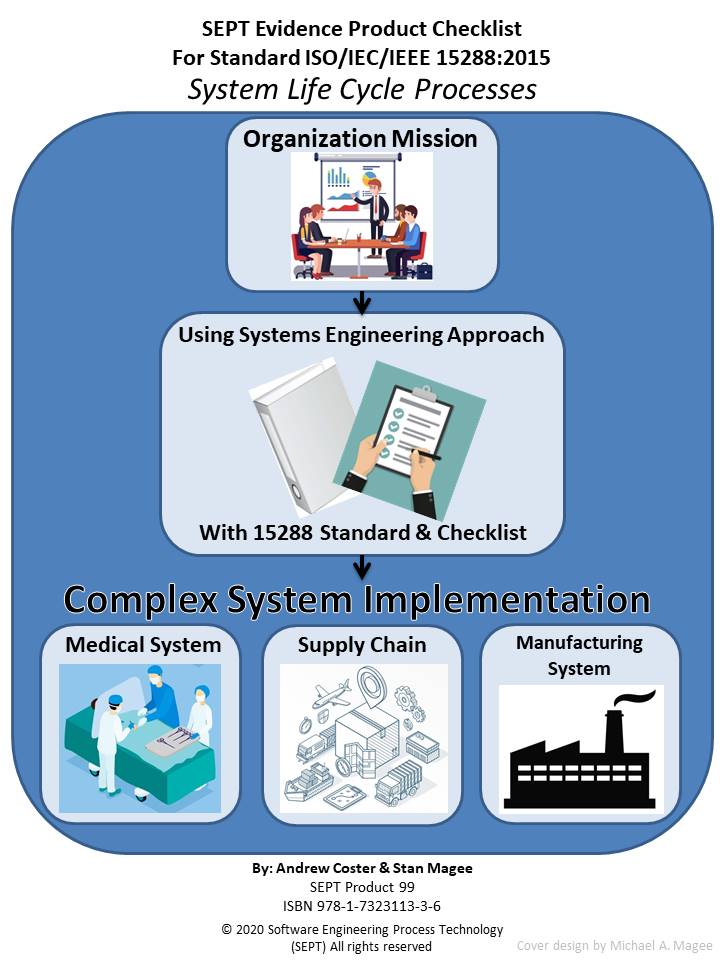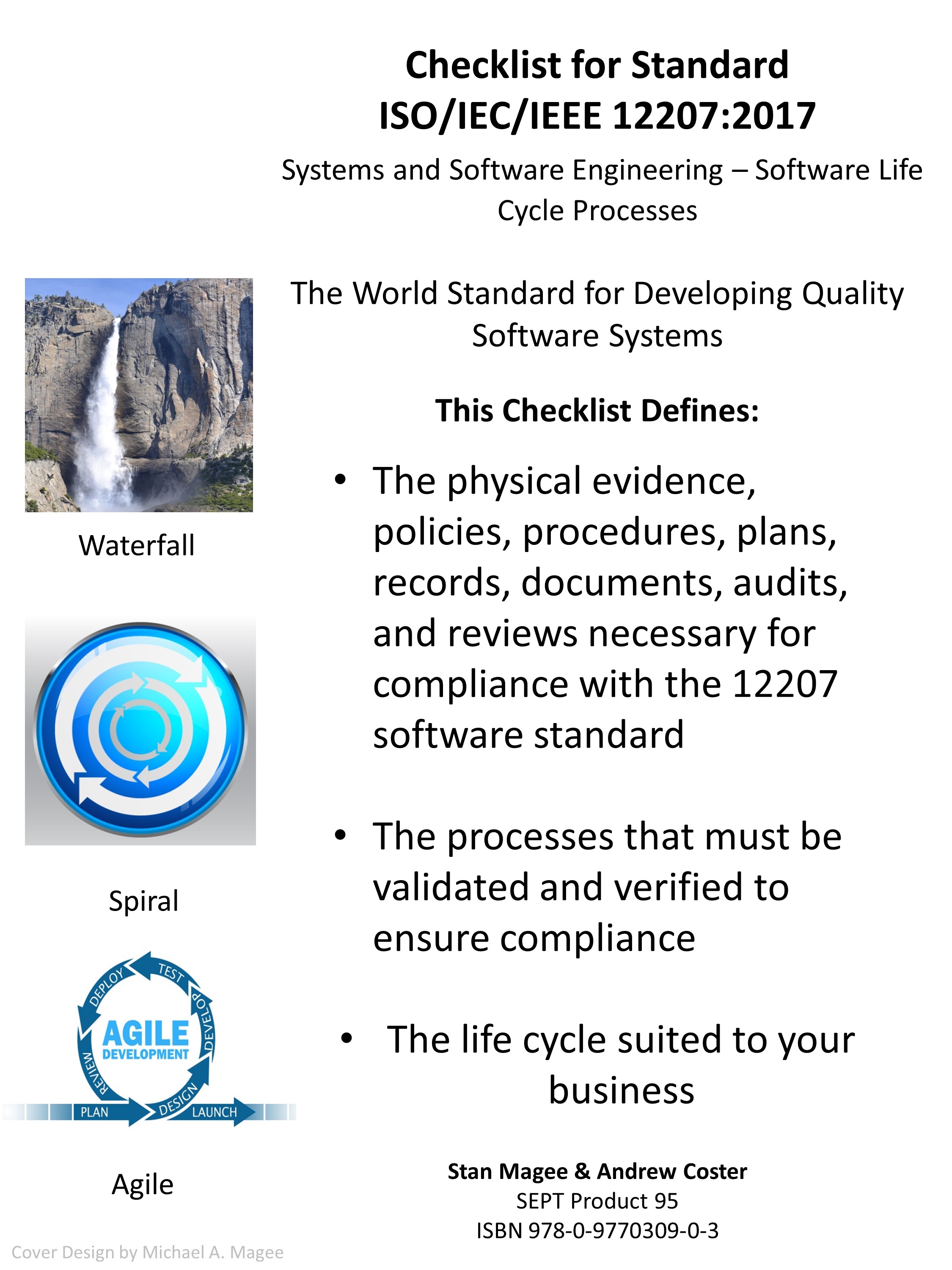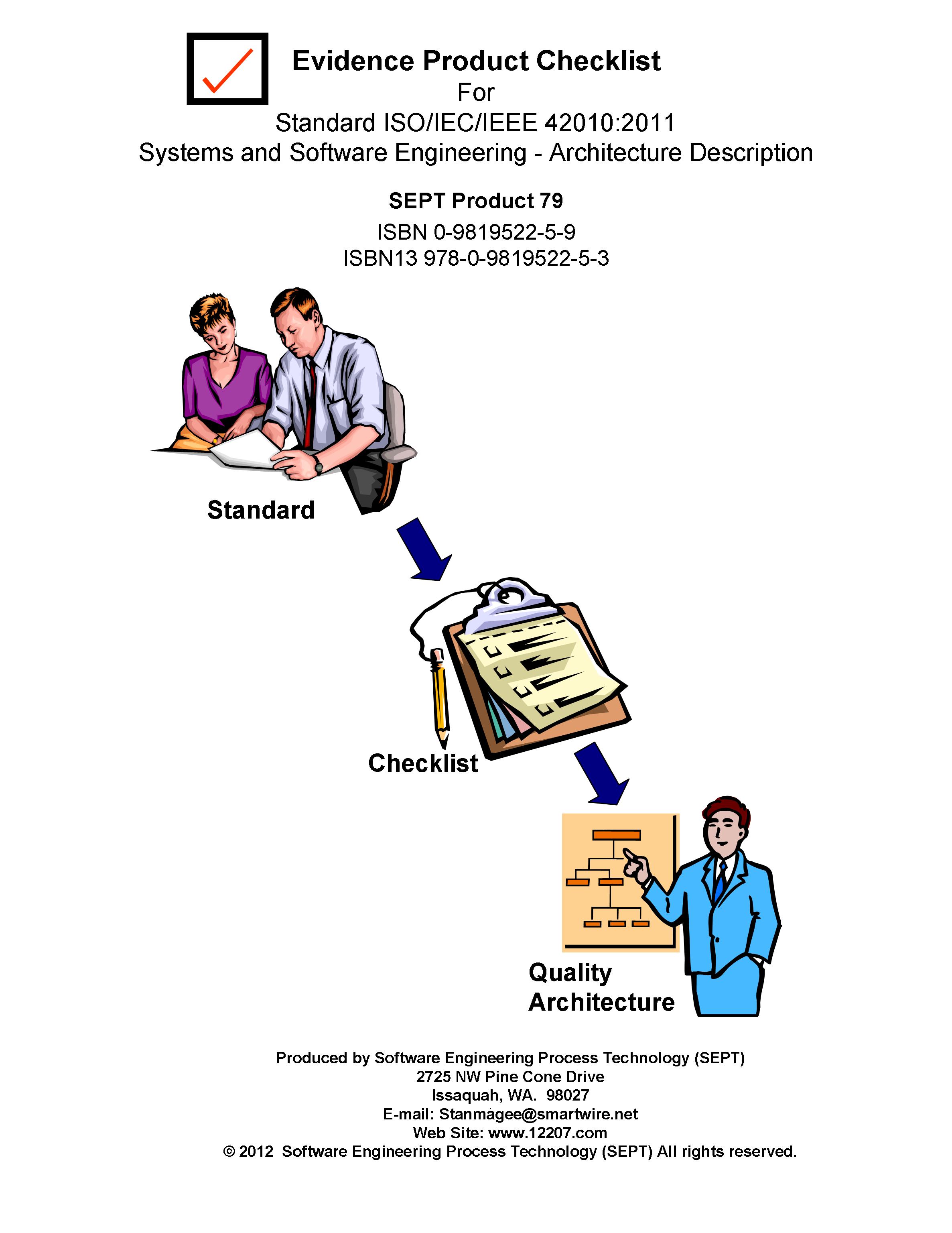After finding the SEPT product you want to
purchase, click on BUY and the system will transfer
you to the NORMADOC store which provides the fulfillment process for SEPT.
Every checklist is available in PDF or word format. The latter format allows you to adapt the checklist to your business case and/or a media of your choice such as a web-based excel worksheet. This enables you to demonstrate compliance with the standard in a manner that is most efficient for you.
Every checklist comes with four hours of free consultation. SEPT will answer any question concerning the standard or checklist for 60 days after purchase.
Checklist for - ISO/IEC 15288:2015-Systems and software engineering-System life cycle processes
Authors: Andy Coster and Stan Magee Pages: 448
In tabular form, this checklist defines by each clause and sub-clause of ISO/IEC standard 15288, what is required in the way of physical artifacts that demonstrates the standard has been followed. The types of artifacts listed in the checklist are procedures, plans, records, documents, audits and reviews.
When building a large complex system with many sub-systems such as an airplane, oil tanker, or setting up a new type of medical delivery system, it is a daunting task with high risk. Until 1995 there was no recognized ‘Best of Practice” standard that the world could agree on for building a large complex system. Then ISO developed the first standard (Best of practice) for System Engineering of large complex systems, which was ISO/IEC 15288. It initially defined about 600 artifacts to be produced in the development of a large system.
By 2015, the world was able to collect more and more “lessons
learned” from many large projects that failed, or had
massive cost, or schedule overruns. With this new data 15288
grew in size, to over 1050 artifacts. If an organization does
not have a clear picture of what artifacts are
required in the life cycle of such a system it is easy to miss
an important process step. This is why a checklist like the
SEPT checklist for 15288 is so important.
In total, there are over 1050 artifacts included in the SEPT 15288 checklist of which over 700 are “Required”.
|
Checklist for - ISO/IEC/IEEE 12207:2017, Software Life Cycle Processes
Authors: Andy Coster and Stan Magee Pages: 395
ISO/IEC 12207:2017 "System and Software Engineering -
Software Life Cycle Processes" is often confusing and
laborious. This is because directions contained in the
standard can seem unclear or ambiguous therefore the experts
at SEPT have produced a checklist. This checklist was prepared
by analyzing each clause in ISO/IEC 12207 for key words
that signify a required policy, procedure, plan, record,
document, audit, or review. The resulting checklist then
provides an easy-to-use categorized list of physical
evidence against which you can audit your work products
to help insure conformance with ISO/IEC 12207.
To better understand this model a user of this product
should understand SEPT definition of an auditor.
An auditor can be your boss, an inside auditor or an
outside auditor such as the FDA, DoD or a prime
contractor for your product. The checklist will give
the auditor and you a common reference point in the
standard (Clause number) that becomes the index point
for physical evidence. If a standard calls out
physical evidence more than once, such as a "training
plan" it is always index to the first clause that
reference the training plan This method will allow you
to organize your physical evidence in a systematic
manner for presentation to the auditor. This simple
checklist allows you to bring the document down to
simple terms that a professional lay person can
understand (policy, procedure, plans, records,
documents, audits and reviews).
The checklist will allow the organization to
divide the compliance activity into manageable
work packages such as procedures, plans, documents
etc.
Checklist for - ISO/IEC/IEEE 42010:2011 Systems and Software Engineering —Architecture Description
Authors: Andy Coster and Stan Magee Pages: 41
The process of defining what is necessary for compliance
with a process standard such as ISO/IEC/IEEE 42010:2011
is often confusing and laborious because the directions
contained in the standards are unclear or ambiguous. To
aid in determining what is actually required by the
document in the way of physical evidence of compliance,
the experts at SEPT have produced this checklist. This
checklist is constructed around a classification scheme
of physical evidence comprised of policies, procedures,
plans, records, documents, audits, and reviews. There
must be an accompanying record of some type when an
audit or review has been accomplished. This record would
define the findings of the review or audit and any
corrective action to be taken. For the sake of brevity
this checklist does not call out a separate record for
each review or audit. All procedures should be reviewed
but the checklist does not call out a review for each
procedure, unless the standard calls out the procedure
review.
In this checklist, manuals, reports, scripts and specifications
are included in the document category. When the subject
standard references another standard for physical evidence,
the checklist does not call out the full requirements of
the referenced standard, only the expected physical evidence
that should be available.
The checklist clarifies what is required for compliance
through a product evidence list that will assist any
organization in meeting the requirements of this standard.
Use of the checklist will save time and money, and may aid
in meeting certain governmental requirements. This is an
aid that will pay dividends. A quality product at a
reasonable price!




